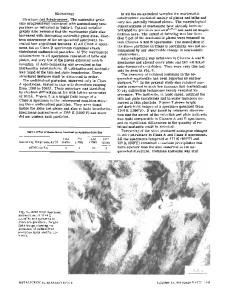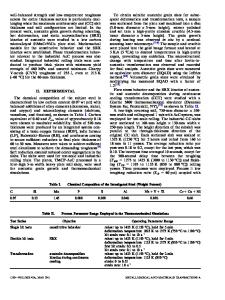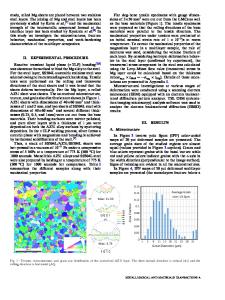Evaluation of Microstructure and Mechanical Properties of Explosive-Welded HSLA/304L Steel Bimetallic Plates
- PDF / 3,356,515 Bytes
- 13 Pages / 593.972 x 792 pts Page_size
- 53 Downloads / 435 Views
JMEPEG https://doi.org/10.1007/s11665-020-04994-5
Evaluation of Microstructure and Mechanical Properties of Explosive-Welded HSLA/304L Steel Bimetallic Plates Changqing Ye, Qingsong Liu, Liang Ni, Shuo Hou, Yiqiang Yao, He Tong, Guangyao Lu, and Jianming Zhou (Submitted September 23, 2019; in revised form May 3, 2020) High strength low alloy (HSLA) steel 10CrNi3MoV and stainless steel 304L (SS304L) were used to manufacture bimetallic plates by explosive welding. The quality and overall performance of the bimetallic plates were evaluated in terms of microstructure and mechanical properties. Its microstructure, elemental distribution, and phase analysis of the bonding interface were investigated by means of OM, SEM, EDS, and XRD. The mechanical properties of the bimetallic plates were studied by experimental measurements, including tensile tests, shear tests, Charpy impact tests, hardness tests, and then evaluated based on the standards. Experimental evaluation showed out that HSLA 10CrNi3MoV steel and SS304L could be cladded with a good quality of bonding properties by explosive welding. The base material 10CrNi3MoV steel still maintained its inherent excellent mechanical performance, even after undergoing explosive welding process. The functional flyer layer SS304L maintained its corrosion resistance even after undergoing a process of post-weld heat treatment at high temperature 645 °C for 240 min. Shear strength of the bimetallic plates was about 432 MPa more than twice the value required by the standard. The maximum hardness value was obtained near the joint on the side of SS304L, and the minimum one appeared in the middle of the explosive welding interface. Keywords
cladding, explosive welding, mechanical properties, microstructure, weld interface
1. Introduction Bimetallic composite plates can fully combine the respective advantages of the two materials that are used for a flyer layer and a parent base plate, thereby achieving a comprehensive performance that a single metal is hard to reach under normal conditions (Ref 1, 2). The bimetallic composite plate is demanded in chemical, ship manufacturing, and nuclear power industries due to its good corrosion resistance and mechanical properties (Ref 3). Especially in the structural design of new ships with small nuclear reactors to be installed in China, designers are faced with complex material selection issues. These issues include the need to simultaneously satisfy a sound structure, minimum weight, maximum strength and toughness, and resistance to marine corrosion within a reasonable high budget. Unfortunately, no single structure material can satisfy all the requirements simultaneously. Therefore, the bimetallic plates with excellent performance could be employed in the extreme service environment for the small-sized mobile nuclear reactors on the sea. Explosive welding is one of the most widely used methods for manufacturing bimetallic composite plates to join two
Changqing Ye, Qingsong Liu, Liang Ni, Shuo Hou, Yiqiang Yao, He Tong, Guangyao Lu, and Jianmin
Data Loading...











